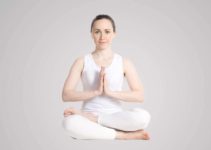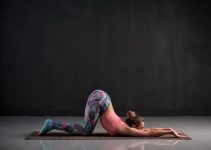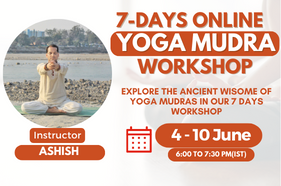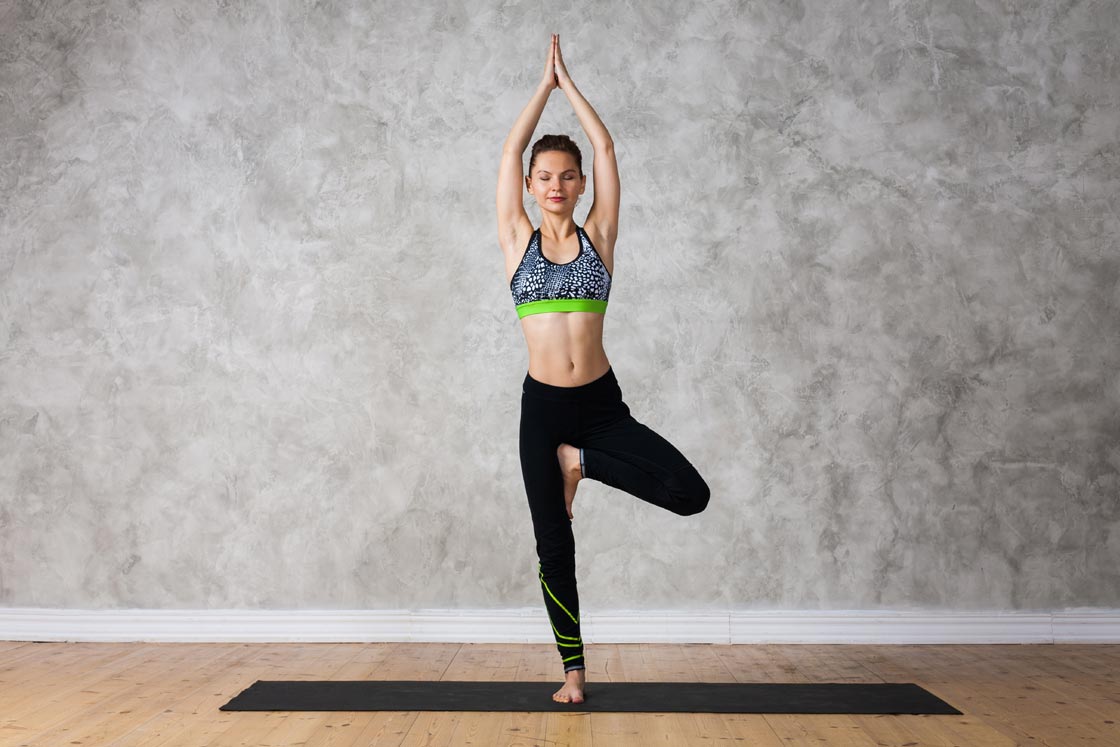
Vrikshasana, also known as the Tree Pose, is a well-known standing and balancing yoga pose in Hatha Yoga. This asana is specifically mentioned in the ancient text known as Gheraṇḍasaṃhitā, which enumerates 32 basic yoga postures. The name “Vrikshasana” is derived from the Sanskrit word “vriksha,” which translates as “tree,” and the posture indeed mimics the steady and graceful posture of a tree, symbolizing balance and stability.
This asana is known for its ability to improve physical balance, stability, and concentration. It symbolizes the connection between the human mind and the natural world, and reflects the balance and strength of a tree. What makes Tree Pose different from many other yoga poses is its encouragement for practitioners to keep their eyes open, promoting mindfulness and inner harmony.
Vrikshasana(Tree Pose) Mythology
Vrikshasana, also known as Tree Pose in yoga, is associated with a rich mythology that adds depth to its practice. According to the legend, King Bhagiratha, an ancient Indian king, performed Vrikshasana as a form of penance for a thousand years.
King Bhagiratha’s devotional practice of tree pose had a profound purpose. He wanted to get the gods Brahma and Shiva to bring the holy river Ganges to earth. His dedication and tireless practice moved the gods, and they granted his request. The result was that the Ganges came down to earth, making it a sacred and revered river in Indian culture.
This myth not only adds a spiritual dimension to the practice of Vrikshasana, but also emphasizes the power of endurance, devotion, and the deep connection between yoga and ancient Indian mythology. The tree pose, with its symbolism of physical balance and inner stability, serves as a reminder of these virtues and the spiritual aspects of yoga practice.
How to Do the Vrikshasana(Tree Pose)
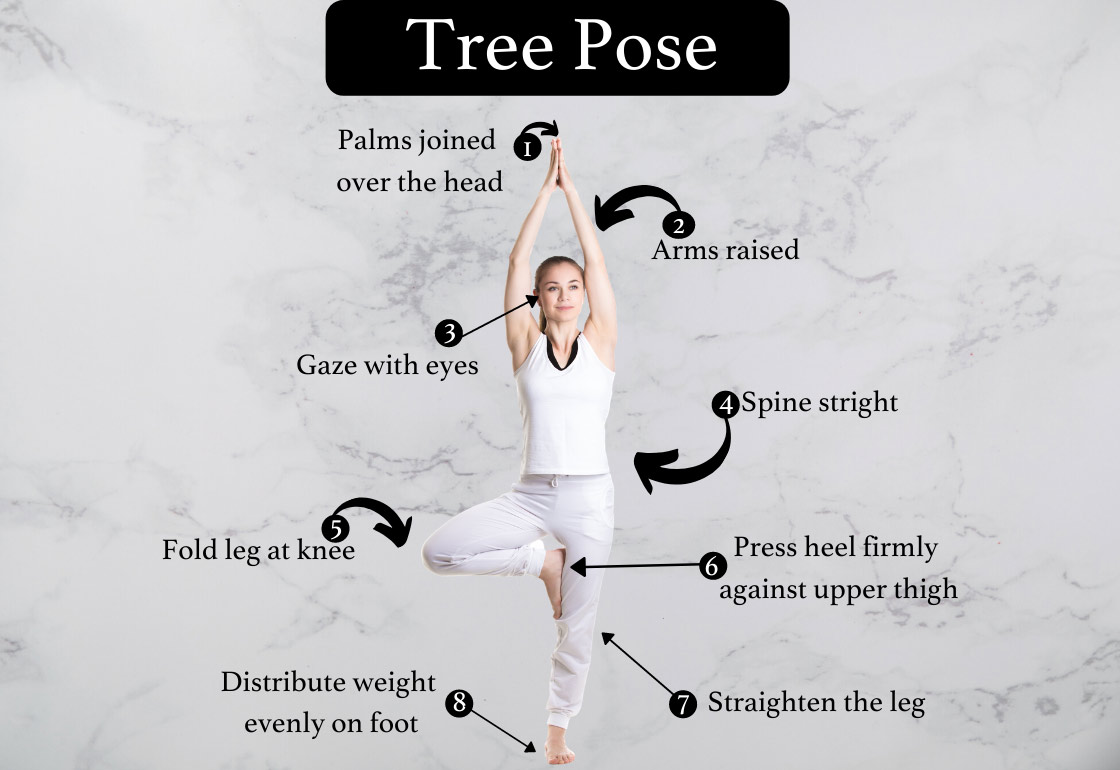
“Stand straight on one leg, bending the right leg and placing the right feet on the left thigh: standing thus like a tree on the ground, is called Tree Posture” – Gheranda Samhita 2.36
The Vrikshasana, or Tree Pose, is a graceful yoga posture that requires balance and concentration. Here are the steps to perform this asana:
- Begin by standing straight and tall in Tadasana, also known as the Mountain Pose.
- Bend your right leg at the knee and place the heel against the root of your left thigh. Ensure that your right sole is pressed firmly and flat against your left thigh, with the toes pointing downward.
- Distribute your body weight evenly over your left foot, balancing it on the toe balls, heels, and the inner and outer parts of the foot.
- Straighten your arms and raise them overhead. Join your palms together over your head, creating a Namaste posture.
- Gaze straight ahead and focus your concentration on a single point. Take deep breaths to allow the flow of Prana, or life force energy, in your body.
- Hold this position for 30 to 60 seconds, as per your comfort level.
- Separate your palms and lower your arms slowly.
- Release the right leg and straighten it, all while exhaling. Return to the Tadasana position.
Repetition
- After a few breaths, repeat the entire process with your left leg raised and right leg straight.
- You should perform the full sequence five times with the right leg raised and five times with the left leg raised.
Mental Imagery
- As you hold the pose, imagine yourself as a tree with your head reaching towards the sun, and your feet firmly rooted in the ground.
- Channel the calmness and stillness of a tree as you practice the asana. Feel the positive vibrations of your “roots” and imagine the foundation of your existence.
Vrikshasana is not only a physical pose but also a practice of embodying the qualities of a tree – stability, balance, and rootedness – both in body and mind.
Vrikshasana Beginner’s Tip
Tree Pose in yoga, can be challenging for beginners. Here are some helpful tips for beginners and conditions to avoid when practicing Vrikshasana:
- Start with Support: if you’re new to the tree position, support yourself against a wall or chair. Stand next to the wall and support yourself lightly on it with your hand to keep your balance. This will help you feel more stable while you work on your balance.
- Choose Your Leg Placement: Begin with the sole of your foot against the inner calf or ankle of the standing leg, rather than attempting to place it on the inner thigh. As you gain confidence and balance, you can gradually move your foot higher.
- Focus on a Point: Fix your gaze on a stationary point in front of you. This drishti (focal point) can help you maintain balance and concentration.
- Engage Core Muscles: Activate your core muscles by gently drawing your navel in towards your spine. This will help with stability and balance.
- Breathe: Remember to breathe deeply and steadily while holding the pose. Your breath can help you relax and maintain focus.
- Practice Regularly: Like any yoga pose, regular practice is key to improving balance and flexibility. Don’t be discouraged if you wobble at first; with time and practice, you’ll become more steady in Tree Pose.
Precautions
- Balance: Tree Pose requires balance. Start near a wall or have a chair nearby for support until you gain stability.
- Foot Placement: When placing your foot against your standing leg, you can start with your toes touching the ground for added support before moving it higher.
- Gaze: Fix your gaze on a stable point in front of you to help with balance.
- Breathing: Maintain steady and controlled breath to aid concentration and balance.
- Engage Core: Activate your abdominal muscles to support your posture.
Contraindications
- Recent Leg, Knee, or Back Injury: If you have recently suffered from a leg, knee, or back injury, it’s advisable to avoid performing Vrikshasana. This pose requires balance and stability, which could strain or worsen an existing injury.
- Migraine: Individuals who experience migraine headaches should refrain from practicing Vrikshasana. The balancing aspect of this pose can potentially exacerbate the discomfort associated with migraines.
- Insomnia: If you have trouble sleeping or suffer from insomnia, it’s best to skip Vrikshasana. This pose demands focus and concentration, which might not be suitable for individuals with sleep-related issues.
- High or Low Blood Pressure: People with high or low blood pressure should avoid Vrikshasana. While those with high blood pressure may practice it with modifications, it’s crucial to consult with a healthcare professional or yoga instructor for guidance.
- Vertigo: Vrikshasana involves maintaining balance, which can be challenging for individuals with vertigo. Those who experience dizziness or balance-related issues should steer clear of this pose.
- Arthritis in Knees or Hips: If you have arthritis in your knees or hips, it’s best to avoid Vrikshasana, as the pose places additional stress on these joints.
Vrikshasana(Tree Pose)Variations
- Raised Hands Tree Pose: In this variation, raise your arms overhead, palms together. This adds a balance challenge and stretches your sides.
- Twisted Tree Pose: Start in the standard Tree Pose and then twist your torso to place one hand on the opposite knee. This variation improves spinal mobility.
- Eagle Tree Pose: Cross one leg over the other, similar to the Eagle Pose, while in Tree Pose. It enhances balance and opens the shoulders.
- Floating Tree Pose: Lift your foot higher, close to your hip crease. This increases the intensity and balance challenge.
Vrikshasana(Tree Pose) Benefits
- Improved Balance
Vrikshasana, the Tree Pose, enhances balance as it requires you to stand on one leg with the other foot on your inner thigh or calf. This fosters stability and helps improve your balance, a crucial aspect of physical well-being.
2. Better Posture
This pose encourages proper posture by aligning your spine and shoulders. It’s especially beneficial for individuals who spend extended periods sitting or have postural issues, promoting a healthier spine and more upright posture.
3. Increased Awareness
Vrikshasana cultivates body awareness, making you more conscious of your body’s alignment and sensations in your legs, hips, and spine. It’s a practice of mindfulness and physical awareness.
4. Leg Muscle Toning
The Tree Pose is excellent for toning and strengthening leg muscles, from your feet to your thighs. It’s a comprehensive leg workout that builds strength and muscle definition.
5. Improved Concentration
Holding Vrikshasana requires focused concentration, promoting mental clarity and enhancing your ability to concentrate. It’s a mental exercise as much as a physical one.
6. Prevention of Sciatica
This pose can alleviate or prevent issues like Sciatica, a painful condition caused by compression or irritation of the sciatic nerve.
7. Stimulates the Root Chakra
By stretching and contracting the region at the base of the spine, Vrikshasana enhances the flow of prana to the Mooldhara Chakra region, thereby effectively stimulating the Mooldhara Chakra.
FAQs Vrikshasana(Tree Pose)
The name Vrikshasana is derived from the Sanskrit word “Vrksa,” which means tree. This pose resembles a tree with a strong and grounded trunk.
The duration can vary, but holding the pose for 30 seconds to a minute on each leg is a good starting point. You can gradually increase the duration as you gain stability.
Tree Pose is suitable for beginners, but it may take some time to achieve balance. Using a wall or a chair for support can be helpful when starting out.
Pregnant individuals should be cautious and consult a healthcare provider before attempting this pose. Modified versions with support are often recommended during pregnancy.
It is generally recommended to avoid placing the foot on the knee in Tree Pose to prevent strain on the knee joint. Instead, aim for the inner thigh or calf.
